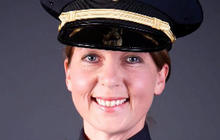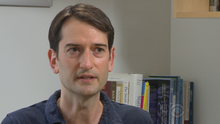Study Suggests Way to Reduce Racial Bias in Police Shootings
NEW YORK First Tulsa, Oklahoma — then Charlotte, North Carolina?. For some, these
deadly shootings are further proof of police bias against black men.

Tulsa police officer charged with manslaughter for shooting unarmed black man
Tulsa police officer Betty Shelby has been charged with manslaughter for fatally shooting an unarmed black man, Terence Crutcher. Tulsa’s Distric…
But is this just
a police issue? NYU psychologist David Amodio has concluded that most Americans show some degree of
unconscious negative attitudes toward minorities.
“Most people are biased,” Amodio said. “According to research, the majority of
Americans show some degree of unconscious negative attitudes towards
minorities.”
Amodio studies the science of racial bias and prejudice.
In his test, subjects are shown a picture of a black or white male carrying
either a gun or a harmless object, and must make a quick decision to shoot or
not shoot.
“You are in the role of a police officer, and
what’s been found is that if the person who appears is black and they’re
holding a cell phone or soda can, people are more likely to accidentally shoot
them than if they were white,” said Amodio.

Subjects in the study are shown images of men of different races holding a variety of objects.
One study found subjects were about 30 percent more likely to shoot an unarmed black
person than an unarmed white person.
“When we’ve used eye tracking in that task, what we find is that
the eyes always go to the person’s face first and then tracks down to see
what’s in their hand,” explained Amodio.

David Amodio
Basically, they see the person’s color first, then may make a biased decision. “It’s automatic,” Amodio said. “It happens within 1 or 200 milliseconds.”
He told CBS News that he has tested the strategy of training subjects to not automatically look at a person’s face. “We found that it’s
effective in reducing bias in shooting.”
In the lab, focusing on the object rather than the race reduces the mistaken
shooting of unarmed blacks by as much as 45 percent.
“Often times we need to make a snap decision, and it can take effort
and some time to overcome an automatic bias.”
But one big question is how research like this, in
the controlled setting of a lab, applies to real life situations in the field — where so many unpredictable things can happen.
